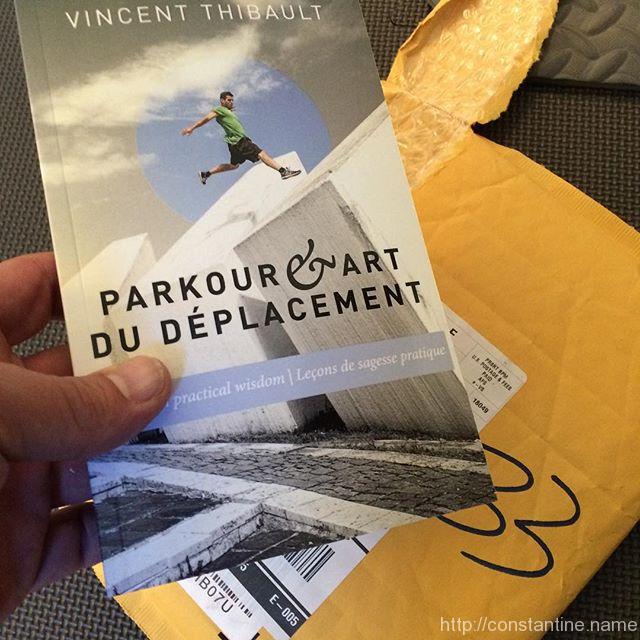What are the connections between movement as a language, mindfulness, and personal development?
Vincent Thibault joins Craig to discuss the dance between movement and mindfulness, and the balance of effort and ease in training Art du Déplacement.
You don’t have to pretend that you’re in top shape. If you’re not in top shape that very day you just do what you can. You can be yourself and the whole notion of ease is actually very profound, and that’s where my personal training connects with meditation […] One of the first things we learn with Buddhist Meditation is to be friends with yourself. I don’t want to confuse the whole discussion and mix our metaphors here, but there’s this notion of learning to be friends with your own mind, and that can translate into the way you approach movement and any kind of training.
~ Vincent Thibault 35:55
Vincent, a dedicated Buddhist practitioner, engages with Craig in a dynamic conversation encompassing spiritual insights merged with movement philosophy. They discuss the balance between effort and ease within training, stressing the importance of adapting to personal circumstances over time. They touch on Buddhist teachings in the context of physical discipline, emphasizing mindfulness, authentic connection, and embracing change as core tenets of their practice.
[Connection] also means that you could be connected to the people who have been practicing this before you. Whether you’ve learned from the Yamakasi or somebody else, you can acknowledge that. You can appreciate what you’ve received from them. And there’s also connection with the people who will come after you. Because—sorry to deliver the news—but you won’t be there forever and you won’t be coaching forever if you’re a coach. And you won’t be moving in the same way forever, and you don’t know when you’re going to see it.
~ Vincent Thibault 37:30
Throughout their exchange, Vincent and Craig explore the nuances of effort in training, highlighting the significance of finding ease alongside dedication. They go into the broader concept of ‘connection,’ extending beyond physicality to encompass energy levels, environment, and a respectful acknowledgment of both predecessors and successors in the discipline.
They discuss how cultivating internal ease can transcend into disciplined practices, fostering mindfulness and self-acceptance. Vincent underlines the necessity of adaptation, advocating for working with present circumstances rather than fixating on an idealized version of practice.
Takeaways
Effort and Ease — Emphasizing the balance between effort and ease in training, stressing the importance of finding fulfillment in the process rather than solely fixating on results.
Connection Beyond Physicality — The notion of connection expands to encompass various dimensions, including relationships with training partners, acknowledgment of predecessors, and a connection to one’s own energy levels and environment.
Adaptation as Vital — The conversation underscores the significance of adapting to circumstances, encouraging practitioners to work with their current situation rather than against it.
Integration of Buddhist Philosophy — Buddhist principles blend with movement philosophy, highlighting mindfulness, authenticity, and self-acceptance as integral components of disciplined practice.
Authenticity in Practice — Being authentic with oneself and others in training is emphasized, encouraging individuals to be genuine about their abilities, limitations, and present state of being.
Resources
Parkour & Art du déplacement: Lessons in practical wisdom – Leçons de sagesse pratique — Vincent Thibault’s 2015 book discussed in the podcast. The book contains both the French and English text. Don’t confuse it with the similarly named, but completely different book, “Parkour and the Art du déplacement: Strength, Dignity, Community”, published in 2014.
L’Art du déplacement : Quatre-vingt-dix propositions philosophiques sur le franchissement d’obstacles — The 2020, French-language-only, edition of the book discussed in this podcast.
Vincent Thibault on LinkedIn.
Carrefours Azure (French-language site) — Vincent’s book publishing company founded in 2016. Fiction and nonfiction. A small publishing house with an innovative and ecological model: books are printed on demand, in Quebec or in France depending on the customer’s shipping address (no pulping, minimal transportation). For every book sold directly on Carrefours azur’s website, a percentage is given back to a green initiative or a humanitarian cause.
Vincent Thibault (French-language site) — Vincent’s personal web site.
Study inspired by… — A series of blog posts, circa 2015, written by Craig, mentioned in this podcast.
(Written with help from Chat-GPT.)
ɕ
